Boise Locomotive’s MK1200Gs
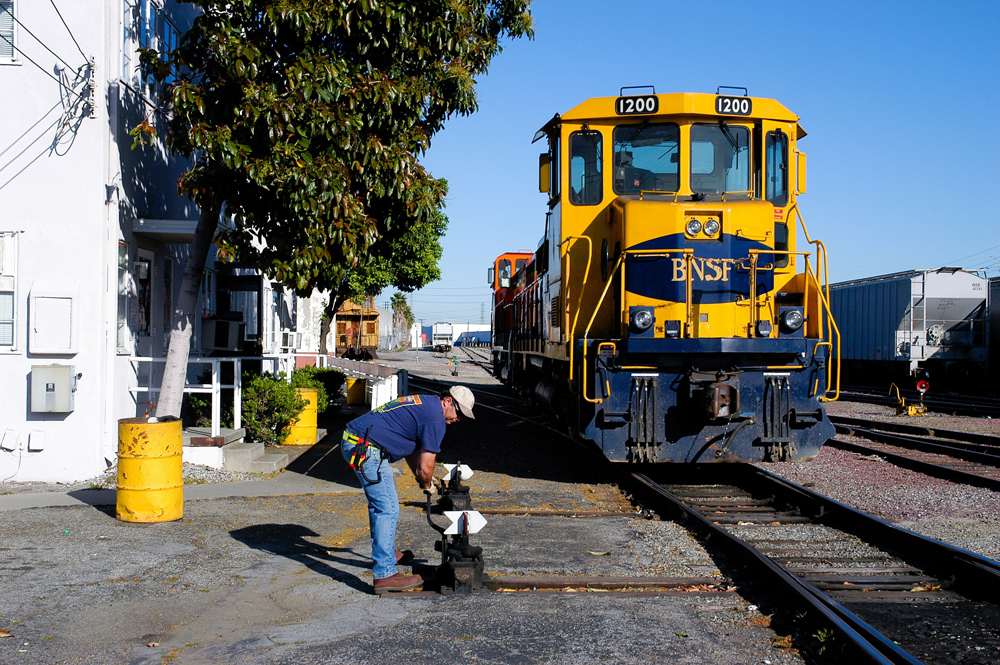
During the heyday of ultra-low emission liquid natural gas as an alternative to diesel propulsion, Boise Locomotive Co. [formerly Morrison Knudsen Rail Co.] produced a quartet of LNG 1,200 hp switchers for domestic use in 1994. Two were sent out into the world to be tested on the Atchison, Topeka and Santa Fe Railway, while the other pair headed to the Union Pacific Railroad. Both pairs eventually settling down to work in the greater Los Angeles area.
Externally, the quartet closely resembled standard diesel locomotives. Internally, the four-axle units, which were rebuilt from retired EMD GP9 frames, were equipped with a 3516G spark-ignited V-16 powerplant. Santa Fe numbered them 1200-1201, Union Pacific 1298 and 1299.
Cutting to the chase, once proper fuel facilities were set up and maintenance people and locomotive engineers learned the idiosyncrasies, the four worked well. The engine was a proven design, though never used in a variable speed application like this. As prototypes these were tinkered with and modified. Although the units operated a bit differently than the more polluting counterparts, they received a general thumbs up.
Destined for the mundane
Eventually, these units settled down into the mundane life they were designed for, switching. Santa Fe’s were based out of subsidiary Los Angeles Junction Railway based in Vernon, and Union Pacific’s worked not too far away in the city of Commerce. It was common to see Santa Fe units working nearby Santa Fe jobs, as well.
By the late 1990s, with the leases coming to an end, Union Pacific released its pair from the roster while BNSF renewed its lease for another 10 years. At that time, the two units, which were set up to run long hood first, had their control stands changed to short hood first operation by Morrison Knudsen. The Union Pacific units were sent back to Boise where they sat for years prior to being leased to BNSF. BNSF then sent them to join its existing pair in Vernon as BNSF Nos. 1202 and 1203 in the company’s new Heritage 1 orange and green paint scheme.
Together the four worked out their mechanical lives until 2011 when reliability issues and rising fuel costs prompted BNSF to sideline them. Three of the units were picked up for scrap pieces — fuel tanks and prime movers were returned to the builder (now part of Wabtec), their shells at last report, were still sitting at a Southern California recycler. The fourth BNSF No. 1200 was returned intact to Boise and eventually ended up in the Pacific Northwest in the hands of a locomotive dealer and rebuilder. It may one day operate again, albeit repowered with a pure diesel engine under the hood.
Successful yet no offspring
It had nothing to do with them. After almost 20 years of service, their time had arrived. Railroads experimented with various LNG designs in both road and switcher configurations over the years, with alternative fuel interest generally increasing when the price of diesel rises to extreme costs for a prolonged period of time. But fear not, LNG fueled locomotives can still be ordered today, either factory direct or aftermarket rebuilt.
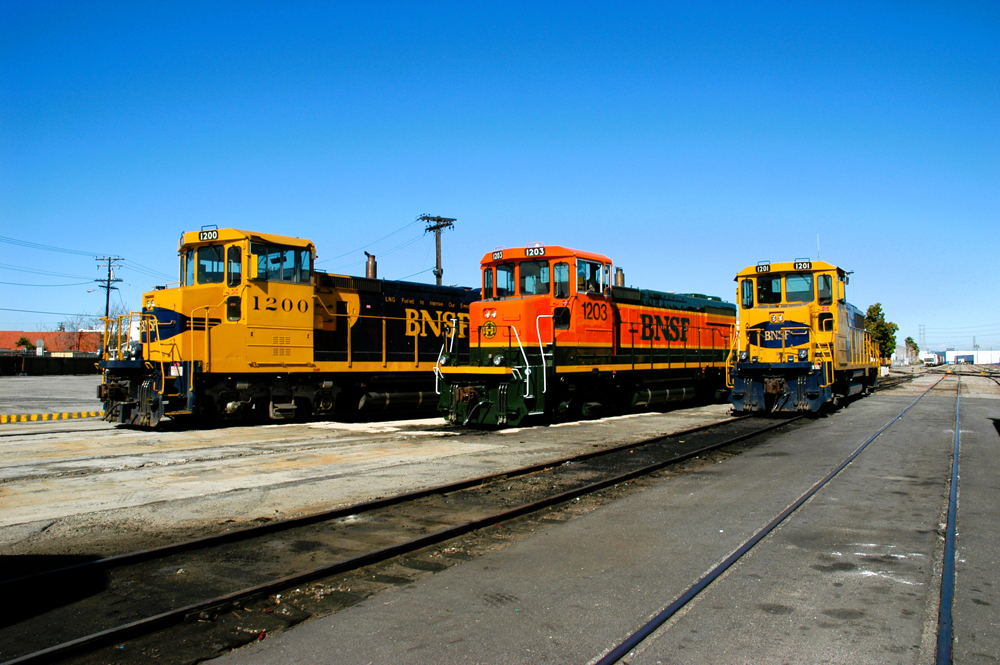






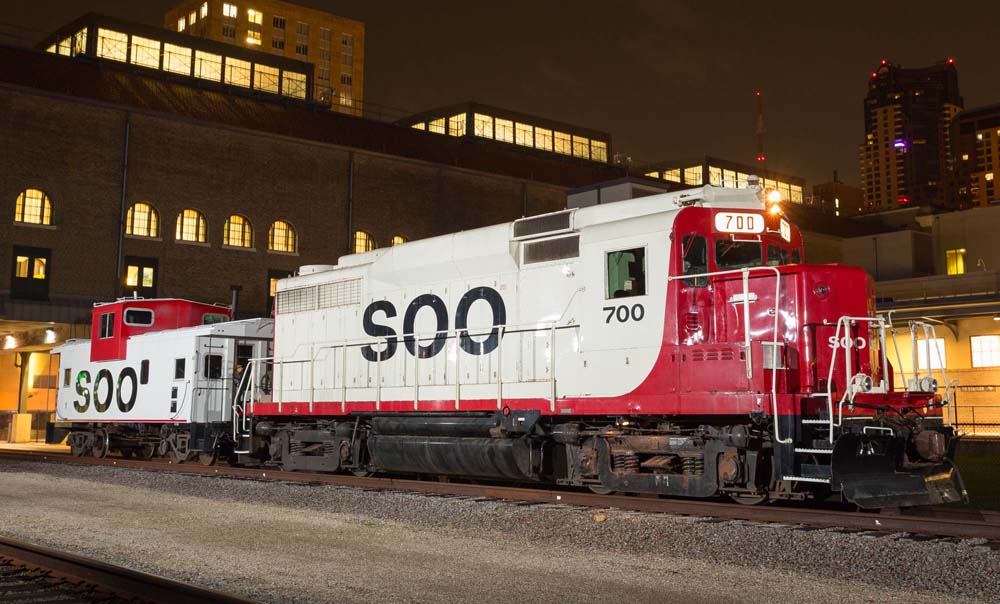
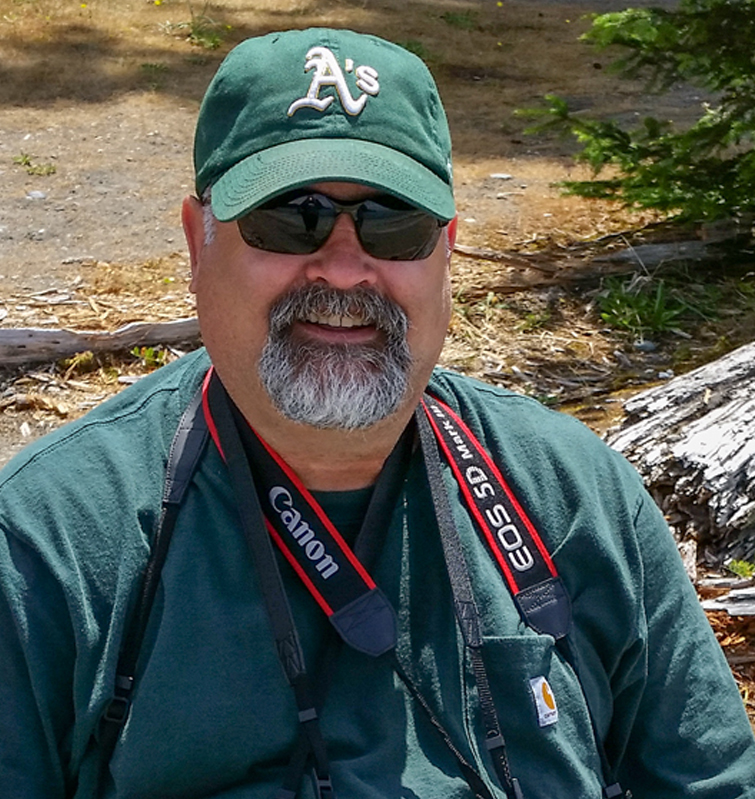
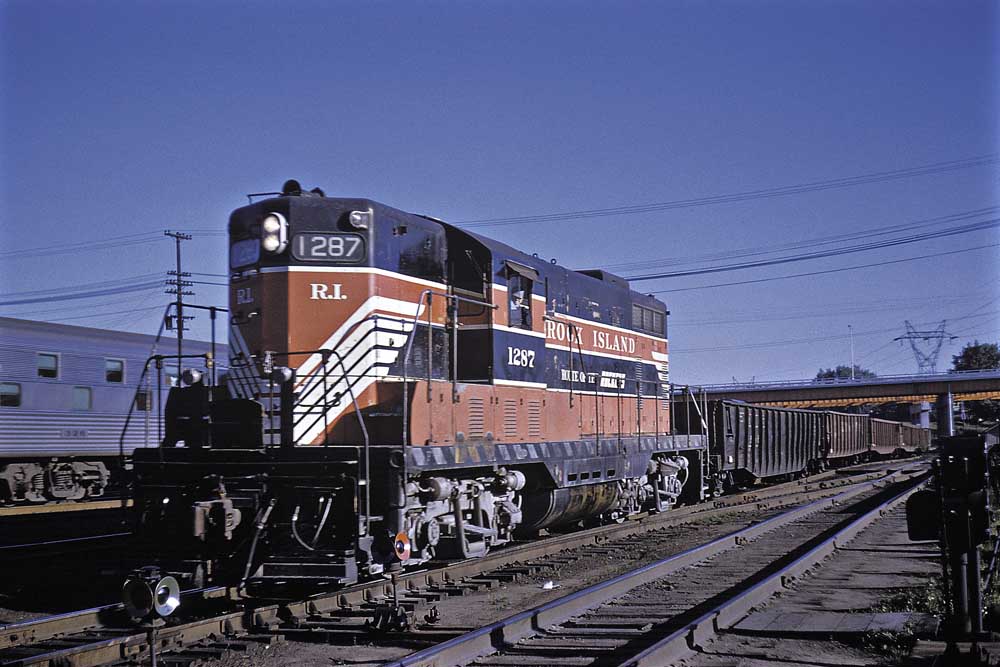
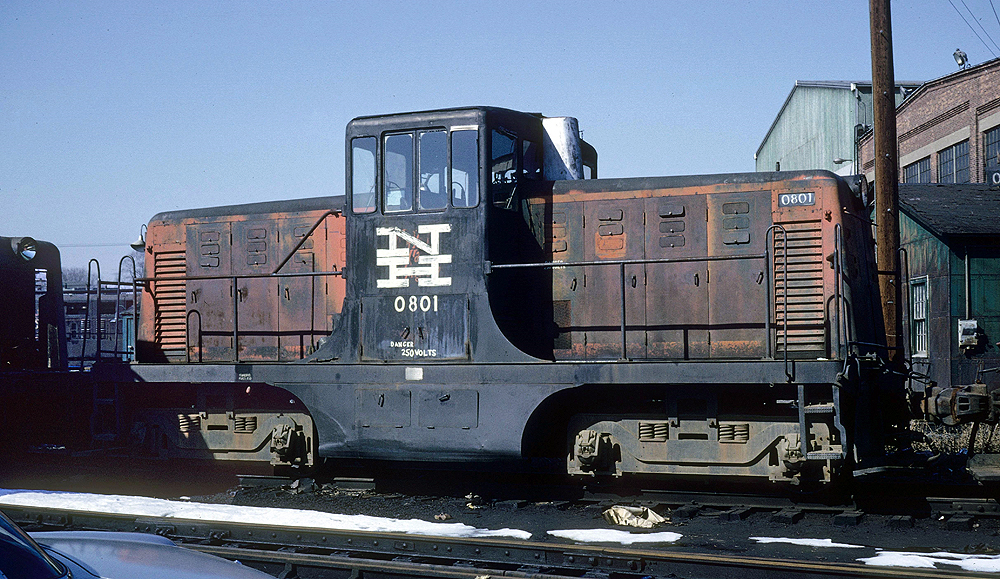




Roger – Besides road units, hydrogen is being looked at for switchers, as well.
Railroads have tried these, battery power and Gensets to reduce emissions, but none have been commercial successes. Are they trying hydrogen in switchers or just mainline units? What next to placate the environmental zealots?
Does California still plan to close down all short lines in the state?
A state where they fret over lawn mower emissions is capable of anything.
Not just lawnmower emissions, but cow farts as well….